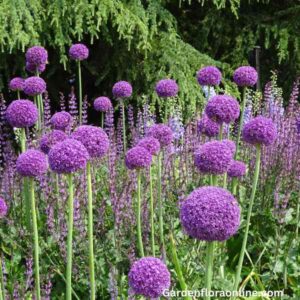Amaryllidaceae
Family Amaryllidaceae: A Diverse Group of Ornamental Plants
The Amaryllidaceae family is a diverse group of flowering plants that are well-known for their striking, often fragrant blooms and ornamental value. This family includes about 60 genera and over 800 species, most of which are native to tropical and subtropical regions. These plants are commonly found in temperate zones, particularly in the Southern Hemisphere, and are prized for their beauty and elegance in both natural habitats and cultivated gardens.
Characteristics of Amaryllidaceae:
- Leaves: Typically, plants in the Amaryllidaceae family have long, narrow, and often sword-shaped leaves. These leaves may be basal (arising from the base) or in rosettes, depending on the species.
- Flowers: The flowers are usually large and showy, often with six tepals (petal-like structures) arranged in a trumpet shape. These flowers are often brightly colored, ranging from white and yellow to red and pink. They are usually clustered in umbels or racemes, often supported by tall, leafless stems.
- Bulbs and Rhizomes: Many members of this family grow from bulbs or rhizomes, allowing them to survive in a variety of climates, including arid and seasonal regions.
Notable Genera and Species:
- Amaryllis: The genus Amaryllis, known for its vibrant flowers, is one of the most iconic members of this family. The species Amaryllis belladonna, also known as the belladonna lily, produces stunning pink or white flowers.
- Narcissus: Another well-known genus is Narcissus, which includes daffodils. These hardy spring-blooming plants are famous for their cheerful yellow or white flowers and their association with the arrival of spring.
- Hippeastrum: Closely related to Amaryllis, Hippeastrum species are often cultivated for their large, trumpet-shaped flowers in shades of red, pink, and white. These plants are popular as indoor decorations, especially around holidays.
Ecological and Cultural Importance: Amaryllidaceae plants are not only admired for their beauty but also for their ecological roles. Some species, like daffodils, are essential to pollinators such as bees and butterflies. Furthermore, certain members of the family, such as the Allium species (garlic and onion), have culinary and medicinal uses. The striking appearance of Amaryllidaceae flowers has also made them central in various cultural traditions and celebrations.
Whether you’re a gardener, a plant enthusiast, or someone looking to appreciate the elegance of nature, the Amaryllidaceae family offers a wide variety of species to explore and enjoy.
Showing the single result
-
Allium giganteum (Giant Onion)
Bulbs and Rhizomes

